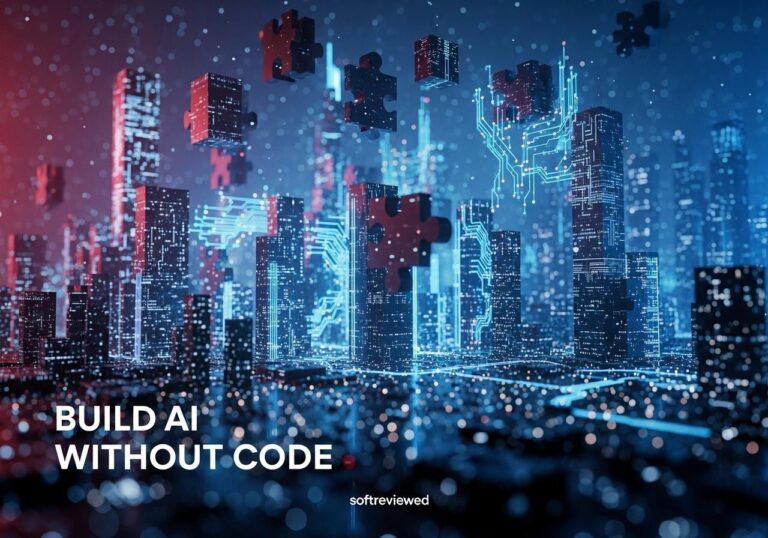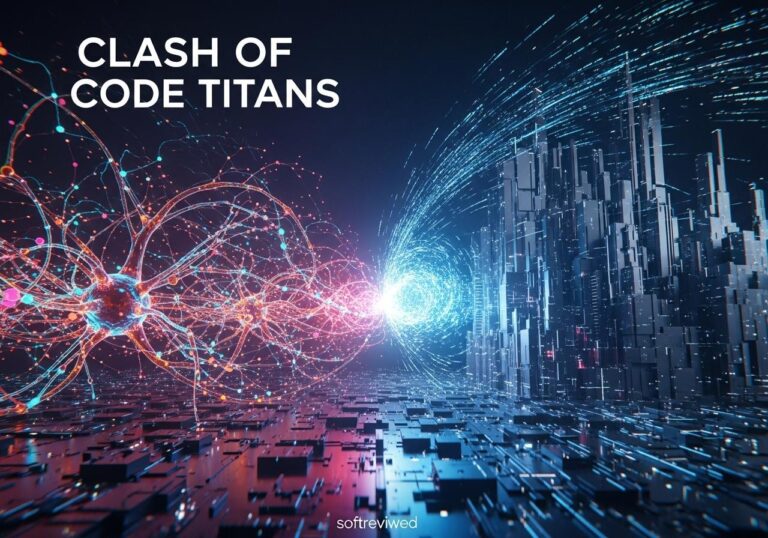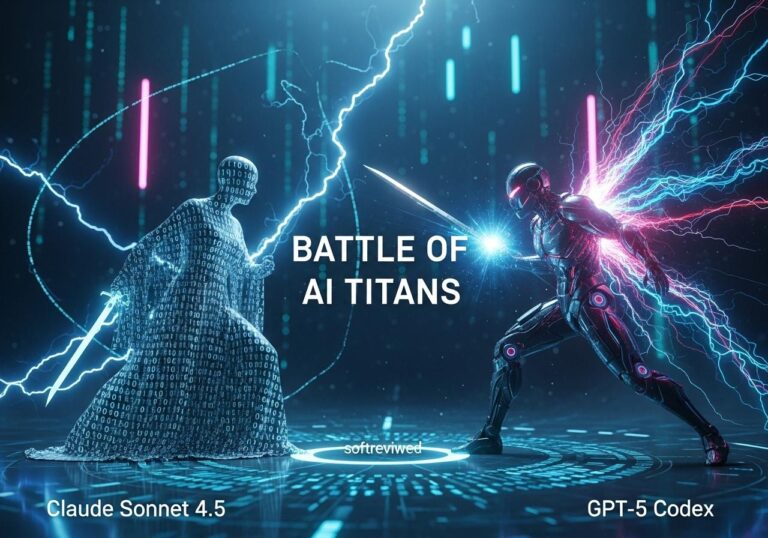GPT-4.1: The Next Generation AI Suite
OpenAI’s latest models bring unprecedented scale, performance, and efficiency across a family of specialized AI solutions.
1 Million Token Context Window
All models (GPT-4.1, mini, nano) support an industry-leading 1 million tokens for processing extremely large codebases and documents, enabling comprehensive analysis of massive datasets in a single pass.
Coding Dominance
GPT-4.1 achieves a remarkable 54.6% score on SWE-bench Verified, representing a substantial 21.4% improvement over GPT-4o, making it the premier choice for advanced software engineering tasks.
Three-Tier Model Family
GPT-4.1: Flagship performance for the most demanding applications
Mini: 83% cost reduction compared to GPT-4o with minimal performance tradeoffs
Nano: Fastest and most affordable option at just $0.10/$0.40 per million tokens for input/output
Multimodal Mastery
Leading the Video-MME benchmark with an impressive 72% score, these models demonstrate superior long-context comprehension across text, images, and video, enabling sophisticated multimodal applications.
Real-World Task Optimization
Enhanced performance for practical applications including frontend coding, legal/financial document processing, and AI agent workflows, delivering tangible efficiency improvements for businesses across industries.
Strategic API Focus
Available exclusively through API (not ChatGPT) with pricing structure aligned to developer priorities, providing maximum flexibility for custom implementation in production environments.
OpenAI Unveils GPT-4.1 Family: Smarter, Faster, Cheaper AI Models Hit the API
Hey everyone! Big news from the OpenAI camp today. If you're a developer working with AI, you'll want to listen up. OpenAI just pulled back the curtain on a brand new family of models built specifically for API use: GPT-4.1. This isn't just one model; it's a trio designed to offer a spectrum of capabilities balancing intelligence, speed, and cost.
Joining the live announcement were Kevin (Product Lead), Michelle (Post-training Research Lead), and Ishaan (also from Post-training), who walked us through what makes this release exciting. We're talking significant boosts in performance across the board, especially in crucial areas like coding and instruction following, plus the introduction of a super-efficient new model called Nano. And maybe the best part? These upgrades come with welcome price drops and expanded capabilities like massive context windows for all models in the family.
So, what exactly is in the GPT-4.1 family, and why should you care? Let's break it down.
Meet the GPT-4.1 Lineup: Tailored Intelligence for Every Developer Need

OpenAI is rolling out three distinct models under the GPT-4.1 banner, available right now through the OpenAI API:
GPT-4.1: The New Powerhouse
Think of this as the smartest model in the family, optimized for tackling your most complex tasks. If you need top-tier intelligence for intricate coding challenges, sophisticated reasoning, or demanding agentic workflows, GPT-4.1 is likely your go-to. It builds upon the strengths of previous models, offering enhanced performance while being cheaper than its predecessors like GPT-4o.
GPT-4.1 Mini: Balancing Speed and Smarts
Need a model that's still highly intelligent but offers a significant speed boost? Enter GPT-4.1 Mini. This model strikes an excellent balance, making it a versatile and affordable option for a wide range of applications where both capability and responsiveness are key. As Michelle pointed out, it "punches above its weight," particularly in multimodal tasks.
GPT-4.1 Nano: The Tiny Titan for Efficiency
For the first time, OpenAI is introducing a "Nano" model to its flagship lineup. GPT-4.1 Nano is engineered for maximum speed and cost-effectiveness, making it ideal for low-latency tasks. Think applications like auto-completion, content classification, or quick data extraction from documents. Despite its small size, it still packs impressive intelligence and retains the massive context window of its larger siblings.
Comparison Table: The GPT-4.1 Family at a Glance
| Feature | GPT-4.1 | GPT-4.1 Mini | GPT-4.1 Nano |
|---|---|---|---|
| Best For | Most complex tasks, highest intelligence | Balancing speed & intelligence, affordable | Fastest, most cost-effective, low-latency tasks |
| Context Length | 1 Million tokens | 1 Million tokens | 1 Million tokens |
| Max Output | 32k tokens | 32k tokens | 32k tokens |
| Input Price | $2.00 / 1M tokens | $0.40 / 1M tokens | $0.10 / 1M tokens |
| Output Price | $8.00 / 1M tokens | $1.60 / 1M tokens | $0.40 / 1M tokens |
| Cached Input | $0.50 / 1M tokens | $0.10 / 1M tokens | $0.025 / 1M tokens |
| Modalities | Text, Image In -> Text Out | Text, Image In -> Text Out | Text, Image In -> Text Out |
| Latency | Similar to GPT-4o | 40% faster than GPT-4o | 50% faster than GPT-4o |
(Prices per million tokens, subject to change. Cached input pricing applies to reused input tokens within the same session)
What's New Under the Hood? Key Improvements in GPT-4.1
So, what makes this family stand out? OpenAI highlighted several key areas of improvement specifically targeted at developer needs:
🚀 Leaps in Coding Capability: From SWE-bench to Polyglot Prowess
Developers live and breathe code, and GPT-4.1 delivers major upgrades here.
📌 Benchmark Boost: On the SWE-bench coding benchmark, GPT-4.1 achieved 55% accuracy, a huge jump from GPT-4o's 33%. It even surpasses specialized models like OpenAI's own O1 and O3-mini on this task.
📌 Functional Code: The team emphasized improvements in generating code that actually works – better adherence to diff formats, improved ability to explore code repositories, more reliable unit test generation, and ultimately, code that compiles more often.
📌 Multi-Language Mastery: Performance isn't just limited to Python. On Aider's polyglot benchmark, GPT-4.1 shows significantly improved performance across various languages, nearly doubling the diff-based accuracy of GPT-4o and closing the gap between modifying parts of files (diffs) and rewriting entire files.
📌 Mini Shines Too: GPT-4.1 Mini also represents a substantial upgrade over its predecessor, GPT-4o Mini, in coding tasks.
✅ Unwavering Instruction Following: Say Goodbye to Prompt Hacks?
Anyone who's worked extensively with large language models knows the frustration of prompts being ignored or misinterpreted. OpenAI has focused heavily on making the GPT-4.1 family strictly follow instructions.
👉 Less "Prompt Trickery": Kevin mentioned those familiar prompt engineering tricks (like repeatedly telling the model "make sure this is a table, not a list, my boss will be mad!") should be less necessary. The models are designed to adhere to specified formats and constraints more reliably.
👉 Harder Tests Passed: On internal instruction-following evaluations (IF evals), particularly the difficult subset, GPT-4.1 scored 49%, compared to 29% for GPT-4o. On the external Scale MultiChallenge benchmark, which tests multi-turn instruction following, GPT-4.1 achieved 38% accuracy versus 28% for GPT-4o.
👉 Improved Coherence: This enhanced instruction following extends to better coherence and memory over longer interactions.
📏 Massive 1 Million Token Context Window – For Everyone!
This is a big one. All three models in the GPT-4.1 family – yes, even Nano – support a 1 million token context window.
➡️ Deep Document Understanding: This allows the models to process and reason over incredibly large amounts of information simultaneously – think entire codebases, lengthy technical documents, or extensive chat histories.
➡️ No Long-Context Penalty: Crucially, OpenAI confirmed there's no price increase for using the long context capabilities. You pay the standard token rates regardless of the context window size used in your request.
🖼️ Sharper Multimodal Understanding: Excelling with Video and Images
The models aren't just text-based; they boast improved multimodal capabilities.
👀 Video SOTA: GPT-4.1 achieves state-of-the-art performance (72%) on the Video-MME benchmark, significantly better than GPT-4o (65%). This benchmark involves understanding long videos (30-60 mins) without subtitles and answering multiple-choice questions.
👀 Strong Image Performance: While video was highlighted, general improvements in image understanding are also part of the package, with GPT-4.1 Mini showing particularly strong results on benchmarks like MMU and MathVista (73% on both).
Benchmarks Unpacked: How GPT-4.1 Stacks Up
While real-world use is the ultimate test, benchmarks provide a standardized way to measure progress. Here's a quick look at some key results mentioned:
Coding Accuracy: Raising the Bar
- SWE-bench: GPT-4.1 hits 55%, a +22 point jump over GPT-4o (33%). GPT-4.1 Mini reaches 24%.
- Aider's Polyglot: GPT-4.1 achieves 52% (whole file) and 53% (diff). This nearly closes the gap between the two methods and is a massive jump from GPT-4o's 31% (whole) / 18% (diff). GPT-4.1 Mini lands at 35% (whole) / 32% (diff), significantly outperforming GPT-4o Mini (4%/3%). GPT-4.1 Nano debuts at 10% (whole) / 6% (diff).
Instruction Following: Harder Tests, Better Results
- Internal OpenAI IF Eval (Hard Subset): GPT-4.1 scores 49%, beating GPT-4o (29%), O1 (high) (41%), O3-mini (high) (49%), and even GPT-4.5 (38%). GPT-4.1 Mini hits 45%, and GPT-4.1 Nano achieves 32%.
- Scale MultiChallenge: GPT-4.1 reaches 38% accuracy, compared to 28% for GPT-4o. GPT-4.1 Mini also performs strongly at 36%.
Long Context Reliability: Needle in a Haystack No More
The "Needle in a Haystack" test involves hiding a specific piece of information ("needle") within a large text document ("haystack") and asking the model to retrieve it.
✅ Near-Perfect Recall: The visualization showed that GPT-4.1, GPT-4.1 Mini, and GPT-4.1 Nano all achieved virtually 100% successful retrieval across the entire 1 million token context length, regardless of where the "needle" was placed (depth). This is a testament to the models' ability to effectively utilize their vast context windows.
Multimodal Milestones: Setting New Standards
- Video-MME: GPT-4.1 sets a new state-of-the-art with 72% accuracy.
- MMU & MathVista: GPT-4.1 (75% / 72%) and GPT-4.1 Mini (73% / 73%) demonstrate strong performance, often exceeding or matching previous models like GPT-4.5 and O1 (high).
Putting GPT-4.1 to the Test: Real-World Demos & Developer Insights
Benchmarks are great, but seeing the models in action is where things get really interesting. Ishaan and Michelle showcased several demos:
Demo 1: Building a Functional App from a Single Prompt
Michelle demonstrated creating a functional Hindi flashcard web application using a single, detailed prompt given to GPT-4.1.
💡 Key Takeaway: The model successfully generated a single-page React app, incorporating features like card creation, review, search, statistics tracking, and even a requested 3D flip animation – all from one instruction set. The resulting app looked polished and functional, showcasing the model's improved coding and instruction-following capabilities. The GPT-4.1 version significantly outperformed a similar attempt with GPT-4o, which missed some features and lacked visual polish.
Demo 2: Analyzing Large Logs with Precision
Ishaan demonstrated using GPT-4.1 as a log analysis assistant.
📌 Setup: He configured the model with a system message defining its role, the expected format for log data (<LOG_DATA>) and user queries (<QUERY>), and specific rules for responding (e.g., only answer based on log data, use XML format, handle errors).
📌 Long Context in Action: He pre-loaded a large NASA server log file (around 450k tokens) from 1995.
📌 Needle Finding: He successfully tasked the model with finding a specific, non-standard log line he had manually inserted ("With a gentle nudge…"), demonstrating its ability to find anomalies within vast amounts of data.
📌 Strict Instruction Adherence: The model correctly refused to answer a query not wrapped in the specified <QUERY> tags, instead outputting the predefined error message – showcasing the improved instruction following. When the query was correctly formatted, it accurately retrieved the requested information from the log data within the specified XML structure.
Insights from the Field: Windsurf Sees Major Gains
To provide an external perspective, Varun, the founder and CEO of Windsurf (an agentic coding IDE), joined the stream. Windsurf was an early tester of GPT-4.1.
✅ Significant Performance Uplift: Varun reported a 60% improvement on their internal end-to-end software development benchmarks compared to GPT-4o.
✅ Reduced Degeneracy: They observed substantially fewer instances of undesirable model behavior, such as reading unnecessary files (down 40%) or modifying unrelated files (down 70%).
✅ Less Verbosity: GPT-4.1 was found to be 50% less verbose than other leading models, leading to cleaner and more focused interactions.
✅ Immediate Adoption: Based on these results, Windsurf decided to make GPT-4.1 available free for all users for the next week, followed by heavy discounts, highlighting their confidence in the model's value for developers.
Pricing That Makes Sense: More Power, Less Cost
Perhaps one of the most developer-friendly aspects of this launch is the pricing structure:
- GPT-4.1: 26% cheaper than GPT-4o.
- GPT-4.1 Mini: An affordable mid-point.
- GPT-4.1 Nano: The most cost-effective model OpenAI has ever released, at just $0.10 per million input tokens and $0.025 per million cached input tokens.
- No Long Context Tax: As mentioned, using the full 1 million token context doesn't incur extra charges beyond the standard token rates.
This aggressive pricing, especially for Nano, aims to make state-of-the-art AI capabilities accessible for a broader range of applications, including those that are highly sensitive to latency and cost.
Important Update: Saying Farewell to GPT-4.5
With the launch of the more capable and cost-effective GPT-4.1, OpenAI announced that GPT-4.5 will be deprecated from the API. This transition will happen gradually over the next three months, giving developers ample time to migrate their applications to the new GPT-4.1 models. This move reflects OpenAI's focus on providing the best possible performance and value through their latest model family.
How Do DuckDuckGo’s New AI Features Compare to the Capabilities of OpenAI’s GPT-4.1 Models?
Duckduckgo’s new privacycentric ai capabilities unveiled aim to revolutionize user search experiences while prioritizing data security. Unlike OpenAI’s GPT-4. 1 models, which excel in generative tasks, DuckDuckGo focuses on providing contextual relevance without compromising privacy. This fusion of AI and privacy could redefine the landscape of digital search.
Your Data, Better Models: The Power of Collaboration
Michelle highlighted the importance of the developer community in pushing these models forward. OpenAI runs a data-sharing program where developers can opt-in to share their API traffic (securely, with PII scrubbed) in exchange for free credits.
🤝 Mutual Benefit: This shared data is invaluable for training and improving future models, creating a positive feedback loop where developer usage directly contributes to better AI tools for everyone. They use this data to create internal evaluations (like the instruction following and MRCR evals) that directly reflect real-world developer use cases, ensuring that model improvements are genuinely useful.
🤔 What Does GPT-4.1 Mean for the Future of AI Development?
The introduction of the GPT-4.1 family marks a significant step forward. The combination of enhanced intelligence, dramatically improved instruction following, massive context windows accessible even in the smallest model, and significantly lower costs opens up new possibilities.
We can expect developers to build:
- More complex and reliable agentic systems that can handle intricate, multi-step tasks.
- Applications capable of deeply understanding and reasoning over vast datasets or document libraries.
- More cost-effective solutions for tasks previously limited by API expenses, especially using Nano.
- Smoother, more intuitive user experiences thanks to better instruction adherence and reduced model verbosity.
- Sophisticated coding assistants that are more accurate and helpful across a wider range of languages and tasks.
The deprecation of GPT-4.5 signals OpenAI's confidence that the GPT-4.1 family offers a superior alternative across the board.
Getting Started with GPT-4.1 Today
The GPT-4.1, GPT-4.1 Mini, and GPT-4.1 Nano models are available now in the OpenAI API. Developers can start experimenting immediately. Fine-tuning is also enabled for GPT-4.1 and GPT-4.1 Mini today, with Nano fine-tuning coming soon.
This launch underscores OpenAI's commitment to providing developers with powerful, efficient, and affordable tools. By focusing on developer-centric improvements like coding, instruction following, and long context, while also driving down costs, the GPT-4.1 family looks set to empower a new wave of AI-driven innovation. We're certainly excited to see what you build!
GPT-4.1 Family Performance Comparison
This visualization shows the performance improvements of GPT-4.1 models compared to GPT-4o across key benchmarks, along with pricing information and context capacity.







